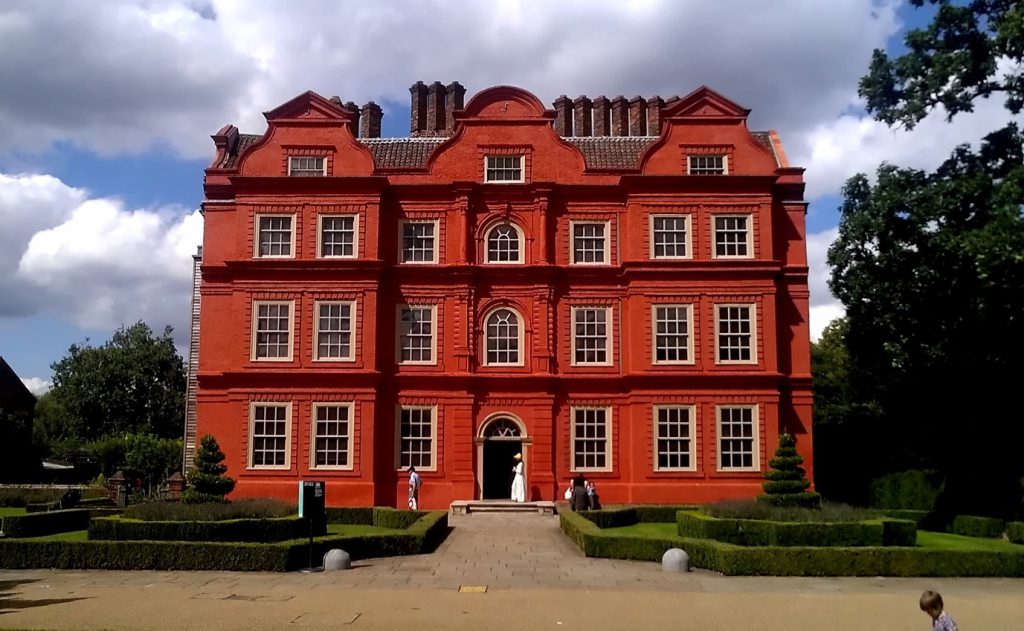View our Kew Botanical Gardens Pinterest board here!
Written by NDA tutor Amy Payler-Carpenter
Here at the National Design Academy, we are gearing up to our very first In-Studio Garden Design Diploma. To get us in the mood for this exciting new venture we have turned our attention to some of the most prestigious gardens within the UK with a visit to Kew’s Royal Botanical Gardens.
 Kew from above
Kew from above
The gardens themselves started life as the surrounding for Kew Palace, a royal residence built in the 16th Century, who’s earliest occupants included Mary Tudor. The large driveway seen above was created to connect Kew Palace with another royal park, Richmond. From its inception the gardens have continued to expand, playing a huge part in botany, bio-diversity and entomology. With components both inside and out, Kew boasts the world’s largest and most diverse collection of rare plants across 326 acres of land.

There is plenty to see within the gardens and you could easily spend a whole day, weather permitting, exploring the grounds. Here is a rundown of just a few of the must-see attractions. The Marianne North Gallery contains a staggering 833 of the artist’s visual recordings of her travels. The relatively small gallery is covered floor to ceiling in the paintings which consist of landscapes and detailed plant studies.

Continuing south towards the Lion Gate, you cannot fail to notice the 50m high Great Pagoda built in 1762. The structure consists of 10 storey’s and is adorned by dragons for protection; these are not the originals which were allegedly sold to settle a gambling debt. It was built as a gift for the founder of Kew Gardens, Princess Augusta, by architect Sir William Chambers. The Great Pagoda is not traditionally Chinese; there is an even number of floors, whereas traditionally there should be 7, representing the 7 steps to heaven.

The Temperate House is the largest Victorian glasshouse in the world and is protected by its Grade I listed status. This mammoth greenhouse contains some of the worlds most threatened species of plant, hailing from Africa, Australia, the Americas, Asia and the Pacific. This is a must-see for anyone who has any interest in plants from these regions of the globe. Once you have experienced this extraordinary feat of engineering, you can take a walk through the trees on the 18m high walkways, just outside the house, offering views not only of the park but beyond.


The Palm House is only half the size of The Temperate house, but no less impressive. Inside you will be hit by the climate of the rainforest, which is sure to cause your camera lenses to steam up. This ‘greenhouse’ houses, as the name suggests, palms and other plants which are indigenous to the rainforest. There are even species in here which are extinct within the natural habit and scientist are constantly researching the medicinal properties that these plants contain.

Very different in design, The Princess of Wales Conservatory creates 10 different climate zones, bringing together cacti, water plants, carnivorous plants, ferns and orchids. Some of the plants within this conservatory are said to smell like rotting flesh, however luckily for us, this is not strong enough to notice. In 1985 Sir David Attenborough buried a time capsule containing rare seeds, which will be opened in 2085. It is said to contain some varies which are now extinct, which may mean scientists will, in the next 66 years, be able to reintroduce these into the wild.

A recent addition to Kew Gardens, The Hive was originally designed for the Milan Expo in 2015. It explored the life of bees, with real-life bees being used in the concept and development process. You can stand inside the aluminium lattice structure and experience life in the hive.

Not the largest or most spectacular of the Royal Palaces, Kew is small and modest. And as it was used to treat the madness of King George III, this seems appropriate. However, the grounds which surround it are an outstanding example of garden design which meets the needs of so many different species. Here we have discussed just a few of the key attractions worth a visit, but there are many more; The Orangery, Queen Charlotte’s cottage and gardens, and The Archives just to name a few. Whether a lover of gardens, architecture, art or just the great outdoors Kew is open all year round, so what are you waiting for?
To find out more about our In-Studio Garden Design Diploma, you can visit our website here!


One Response
Your site has given the best information. This is excellent information. It is amazing and wonderful to visit your site.